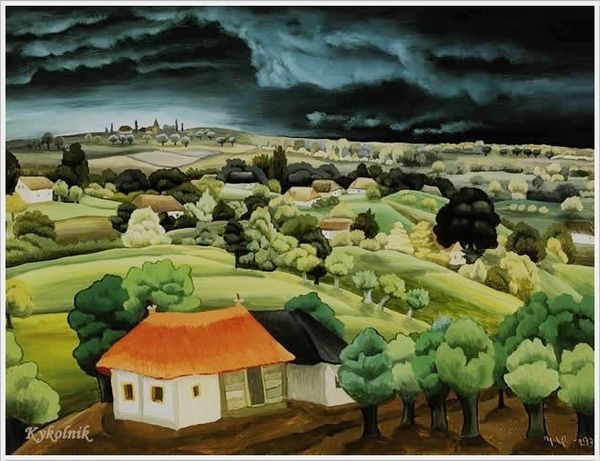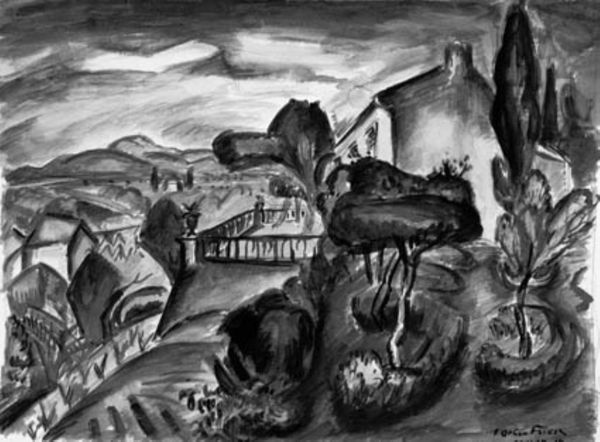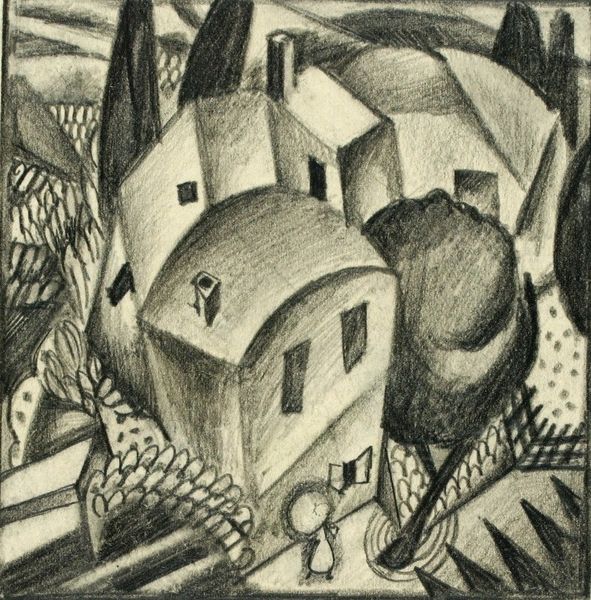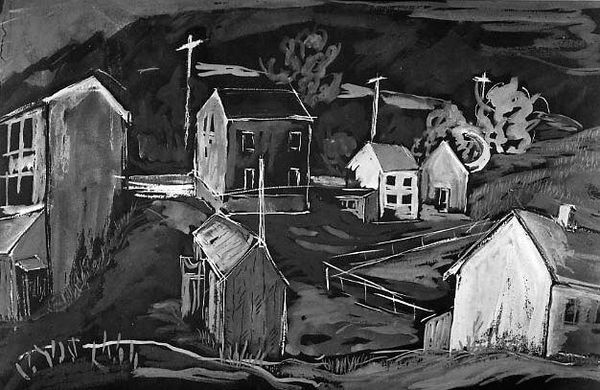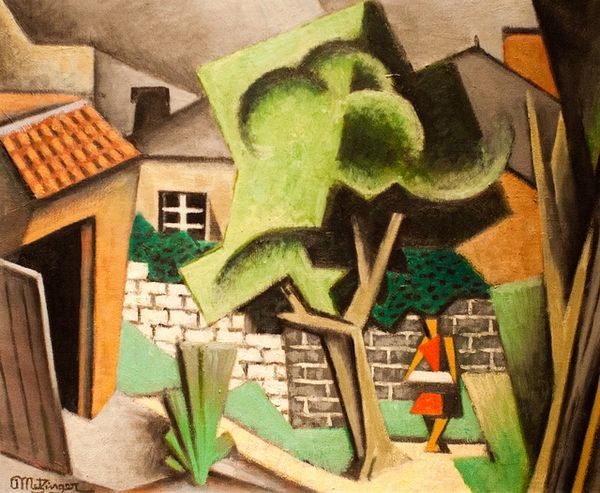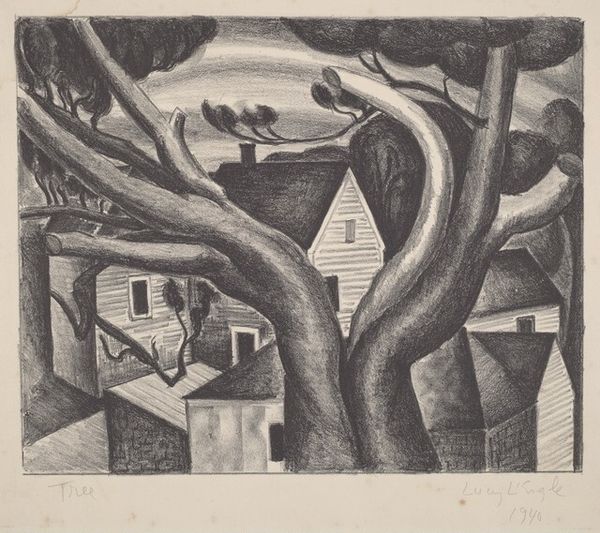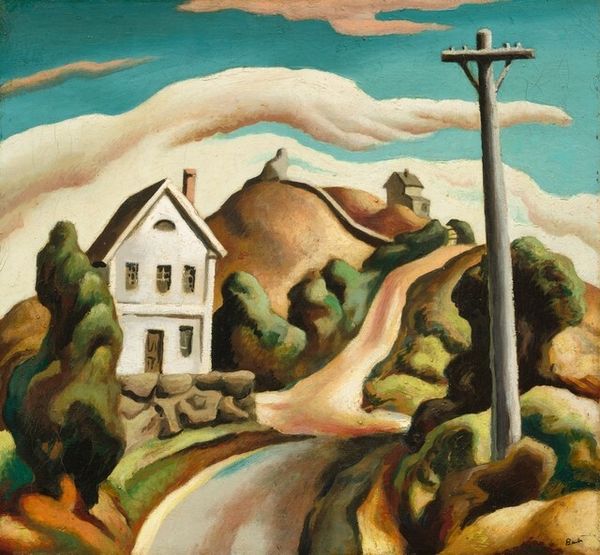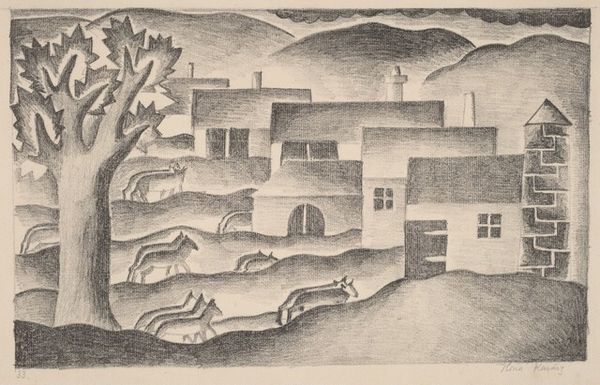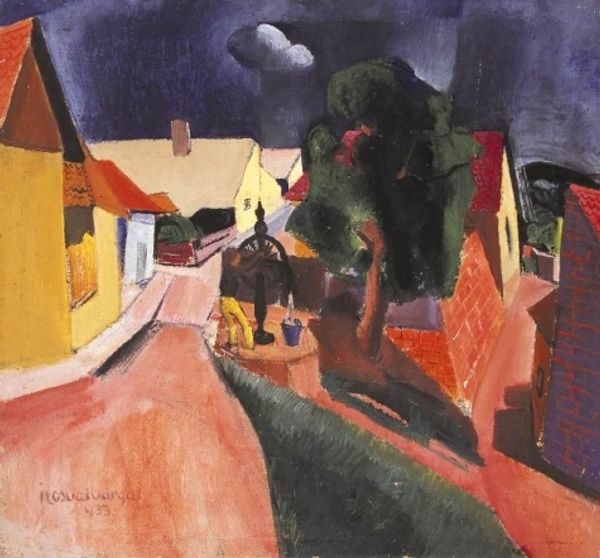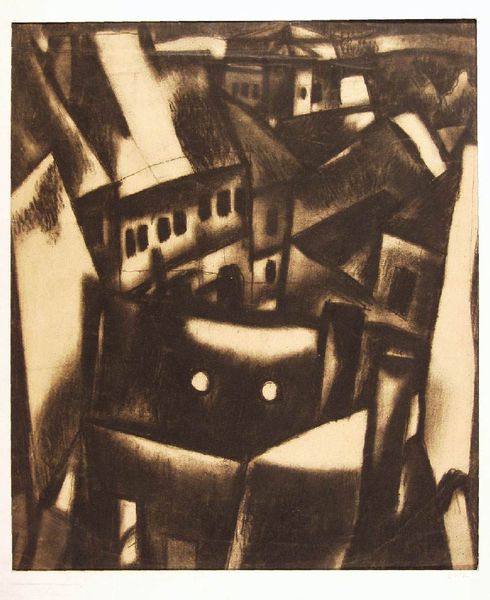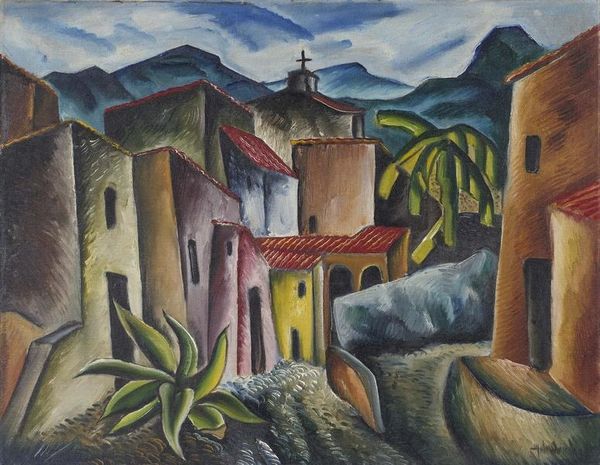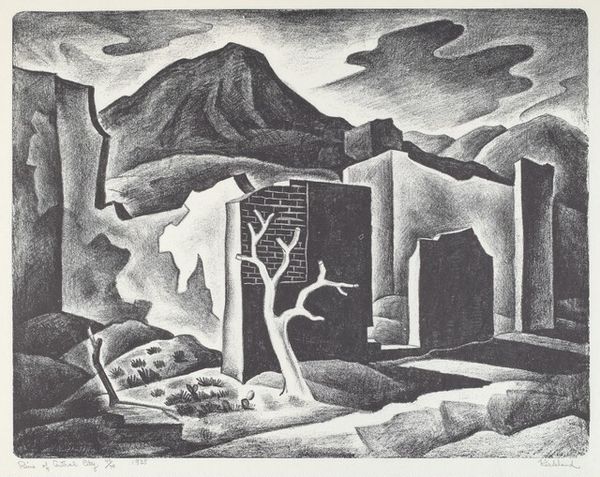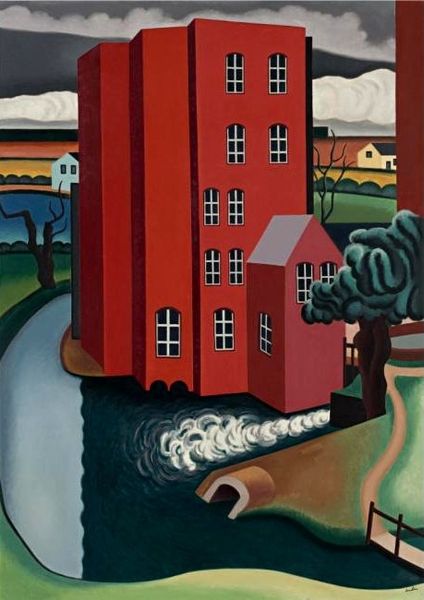
drawing, charcoal
#
drawing
#
charcoal drawing
#
geometric
#
black and white
#
surrealism
#
cityscape
#
charcoal
#
monochrome
#
surrealism
#
realism
#
monochrome
Dimensions: 14 1/2 × 19 3/4 in. (36.8 × 50.2 cm)
Copyright: Public Domain
Curator: Here we have “Composition of a House,” created between 1931 and 1941 using charcoal on paper. What’s your first impression of it? Editor: Stark, almost desolate. The monochrome palette really amplifies the angularity of the buildings. It gives me a very unsettling feeling, like a stage set waiting for a drama to unfold. Curator: It’s interesting you mention that. Considering the era, the social and political landscape of the ‘30s certainly adds layers. There’s a feeling of isolation, of fractured community maybe, rendered in this desolate townscape. This was of course, during the Depression era. Editor: I see how that external context informs our interpretation, but let’s return to the work itself. Note the interesting distribution of light and shadow and how the artist directs our gaze across the plane. Also, it appears that there's an integration of Cubist techniques with realism, leading to this tension within the form. Curator: Indeed. And it’s important to consider that tension isn’t just formal, but perhaps also social. Homes are typically spaces of refuge and safety. But the way the artist composes it makes the house seem rather like a cage, disconnected. How does this intersect with broader anxieties of the period? Editor: An interesting read of this image. Yet, isn’t it equally valid to appreciate the technical skill with which these tones are achieved, quite independently of its era? It's about the masterful control over the medium itself. The image feels architectonic because of its geometry. Curator: But form doesn't exist in a vacuum. Think about what "home" means, culturally. During the Depression, many families faced displacement, homelessness. What we perceive as artistic choice of stark tones could also be an intentional expression of that widespread anxiety and trauma. This intersectionality defines much of art's lasting value. Editor: It’s undeniable that the historical context can enrich one's experience, even as that risks undermining or overshadowing what is immanent within the image itself. Curator: Perhaps what’s most significant is the synthesis. Appreciating the formal qualities in dialogue with the social narratives at play – to acknowledge both the “how” and the “why” together, and what that ultimately expresses about the complexities of society and humanity at that time.
Comments
No comments
Be the first to comment and join the conversation on the ultimate creative platform.
